Maison Law represents injured pedestrians in California. A pedestrian accident can alter a person’s life in a matter of seconds. With a single careless act by a motorist, an innocent pedestrian can suffer severe disability, extensive medical treatment, and insurmountable financial loss.
At Maison Law, we seek financial justice for injured pedestrians and ensure they’re compensated to the fullest extent. Protect your right to compensation and contact Maison Law today for a no-cost, no-obligation consultation.

California Pedestrian Accident Claims Process
STEP 1

Call Us For A Free Consulation
Call us 24/7 with No Obligations
STEP 2

Describe Your Accident Details
We will then discuss your legal options and decide whether to move your case forward.
STEP 3

Retain Maison Law w/ No Upfront Fees
We work on contingency. No attorney fees unless you win your case.
STEP 4

Receive Your Compensation
We will fight for you to earn the highest possible payout for your damages.
How a California Pedestrian Accident Lawyer Can Help
According to the California Office of Traffic Safety, pedestrian accidents are happening far too frequently in California, resulting in 893 fatalities in 2018 and over 14,000 serious injuries. But what these statistics don’t reveal is an even more common issue.
Insurance companies will often under-compensate injured pedestrians who are too injured to work or pay for extensive medical treatment. And in even more unfortunate cases, the insurance company will deny compensation altogether.
That’s where Maison Law can help. Our firm stands up for the right of injured pedestrians in California. Injuring pedestrians is already an inexcusable action, but denying them compensation is reprehensible, which is why we fight for pedestrians’ right to be fully compensated for the following damages:
- Medical and hospital bills
- Property damages
- Occupational and physical therapy
- Lost earnings and wages
- Lost career growth such as raises and promotions
- Property damage
- Lost future earning capacity
- Pain and suffering
What Our Clients Say

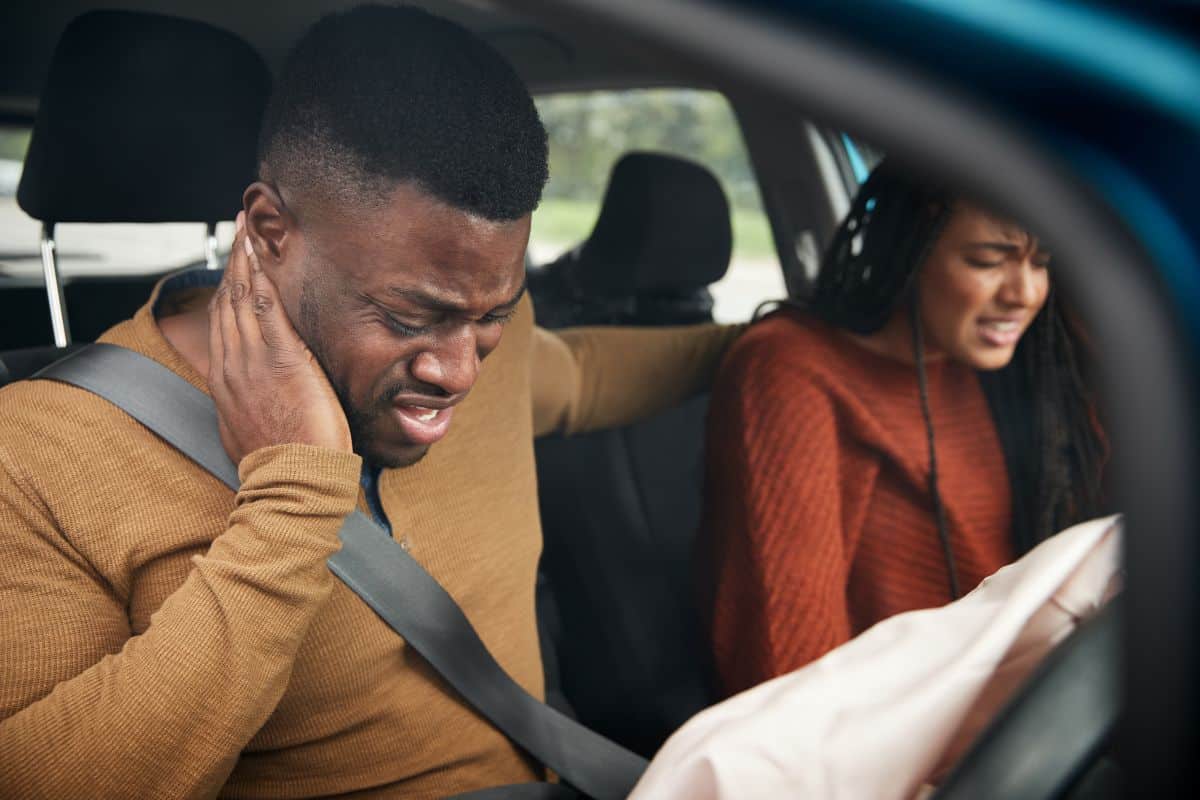
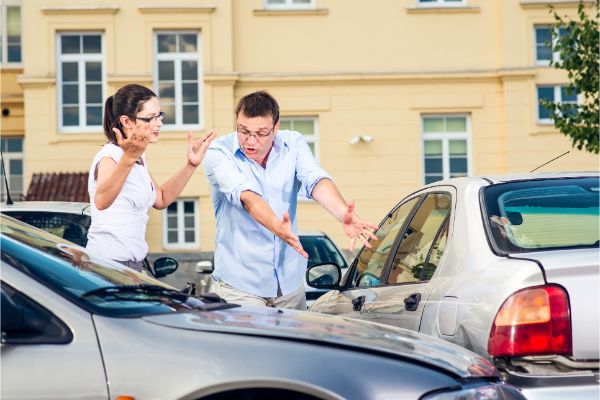
How to Know if You Have a Case After a Pedestrian Accident
Anyone in California injured in a pedestrian accident will wonder if they have a case. If you suffered any type of injury due to another person’s careless or intentional actions, then you have a personal injury case. Knowing you have a personal injury case is one thing, but ensuring you have a strong personal injury case is where Maison Law comes in.
Our firm will identify ways to strengthen your case and ensure you receive a desirable outcome. Here are some signs you have a strong personal injury case after a pedestrian accident:
- The defendant admitted fault. Admission is a powerful tool our firm uses to bolster the facts of your case. Through interrogatories and depositions, we form the right questions to get to the truth of the matter, especially if the defendant is at fault.
- The incident was caught on camera. Dash cams, traffic cams, and eyewitnesses may have caught your pedestrian accident. Undeniable evidence such as footage of the incident can make your request for fair compensation undeniable. Our firm will help you obtain the necessary evidence to strengthen your case and make your statements irrefutable.
- You’ve suffered severe injuries. Unfortunately, serious and verifiable injuries are a part of a strong personal injury case. If you do not have a record or evidence of serious injury, then you won’t have much ground to stand on when making a demand for compensation. Our firm will connect you with trusted doctors, surgeons, and orthopedists to document the extent of your injuries.
- Defendant has a history of carelessness. If the driver that injured you in your pedestrian accident has a bad driving record, this can strengthen your case. It is not uncommon for defense attorneys or the insurance to attempt to place blame onto you for your injuries. But if the defendant has a history of poor driving, then it will be difficult to argue that you were at fault.
- You’ve taken the right steps. After a serious injury, it is expected to seek medical treatment and to continue treating your injury. A lapse in treatment may seem like you’re not that injured, or it has not seriously impacted your life. The attorneys at Maison Law will help you manage your treatment and make sure you are taking all the correct steps to reach a successful settlement.
What to Do After a Pedestrian Accident in California
1
Call the Police
Even if you don’t feel injured or the damage is minimal, always call the police to get a police report.
2
Take Photos
Take pictures of the car damage, license plates, intersection, and surrounding area.
3
Swap Info
Swap insurance info with the other driver, but don’t apologize or say that you aren’t injured.
4
Keep Your Evidence
Don’t wash your clothes or throw away anything that was broken in the accident. Keep everything in a ziplock bag.
5
Go See Your Doctor
Document any pain you feel immediately and in the days and weeks after the accident. Keep your receipts from you appointments and medications.
6
If you are injured in your accident, the insurance company will want to pay as little as possible.
Find out what your case is really worth.
Pedestrian Right-of-Way Law at a California Crosswalk
The term “pedestrian” applies not only to people walking across the street but to people on skates and skateboards. Generally, pedestrians have the right-of-way at all crosswalks. Crosswalks in California are typically marked with white lines and reflectors. Some cities even require flashing lights to illuminate the crosswalk. According to California Vehicle Code Section 21950, drivers must adhere to the following rules when approaching a crosswalk:
- All drivers must reduce their speeds or stop, if necessary, to yield to pedestrians within the crosswalk.
- A driver must stop before the line, not in the middle of the crosswalk.
- A driver must stop if a pedestrian is in his or her half of the lane or approaching quickly enough to be in the direct path of the vehicle.
- Drivers are not permitted to pass stopped vehicles while pedestrians are allowed to cross at a crosswalk.
However, a pedestrian should not step off the curb if it is unsafe. Just as drivers owe a “duty of care” to pedestrians, pedestrians are also required to avoid putting drivers in unsafe situations.
Other laws designed to keep pedestrians safe include:
- CVC 21966: pedestrians should not walk along a bike path or lane if sidewalks or other designated pedestrian paths are available.
- CVC 21955: pedestrians are required to use designated crosswalks.
- CVC 21970: prohibits drivers from blocking marked or unmarked crosswalks or sidewalks.
- CVC 21456: mentions when pedestrians can cross the street using indicators on a crossing light.
- CVC 21952: requires drivers to yield to the right-of-way to pedestrians who are on the sidewalk before they drive over or onto it.
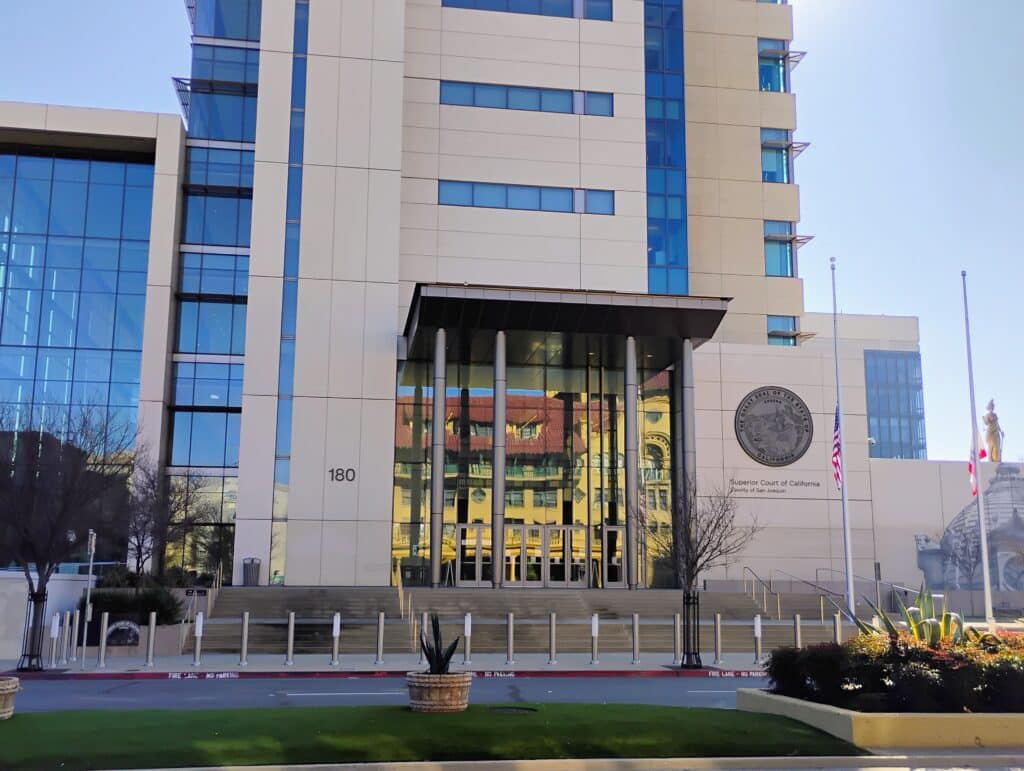

Who is Considered a Pedestrian in California?
Right-of-way laws in combination with common courtesy, as well as common sense, are used to help promote traffic safety in California. Unfortunately, drivers can and will make careless decisions on the road, often causing an accident with other people walking, biking, or driving. Many times, these preventable collisions are due to drivers ignoring signs, signals, or markings where pedestrians may be crossing.
In California, a pedestrian is considered anyone who is:
- Walking
- Riding a motorized assistive mobility device
- Riding something that is propelled by their own efforts, other than a bicycle
People using the following devices for transportation are also considered pedestrians:
- Skateboards
- Scooters
- Roller skates
- Rollerblades
- Skis
- Wheelchairs
- Crutches
The following transportation devices are NOT considered pedestrians:
- E-scooters
- Hoverboards
- Motorized bikes
- Bicycles
- E-bikes
What is Considered a Crosswalk in California?
According to California Vehicle Code 275, crosswalks exist when boundary lines of sidewalks connect at intersections. The statute goes on to say:
“That portion of a roadway included within the prolongation or connection of the boundary lines of sidewalks at intersections where the intersecting roadways meet at approximately right angles, except the prolongation of such lines from an alley across a street.
Any portion of a roadway distinctly indicated for pedestrian crossing by lines or other markings on the surface.
Notwithstanding the foregoing provisions of this section, there shall not be a crosswalk where local authorities have placed signs indicating no crossing.”
Our Clients Say...
“Great experience! Highly recommended!
Hopefully we won’t ever need the services again but if so, definitely would use them again! Thank You!”
July 2021


Is Jaywalking Illegal in California?
Jaywalking in California is illegal. However, it is not a legally defined offense within California’s written statutes. But as of 2023, police are no longer permitted to stop pedestrians and issue citations for jaywalking unless the person jaywalking is creating a hazard, according to Pacific Coast Business Times.
Jaywalking is mostly a common term used to describe ways pedestrians cross the street that may be against the law. Jaywalking is often considered:
- Crossing the street when there is no crosswalk
- Crossing the street outside of a crosswalk
- Crossing the street where there isn’t an intersection
- Ignoring traffic signs instructing pedestrians not to cross
- Ignoring street lights that say “Don’t Walk”
So, while jaywalking is not a legally defined term, it can be seen as a careless act that could potentially hurt your case if you’re involved in a pedestrian accident.
Do Pedestrians Have the Right-of-Way Outside of Crosswalks in California?
Pedestrian’s right-of-way outside of crosswalks is covered by California Vehicle Code 21954. This statute says all pedestrians on roadways at any point other than within marked crosswalks or unmarked crosswalks must yield the right-of-way to all vehicles.
According to California Vehicle Code 275, crosswalks exist when boundary lines of sidewalks connect at intersections. The statute further defines crosswalks as:
“That portion of a roadway included within the prolongation or connection of the boundary lines of sidewalks at intersections where the intersecting roadways meet at approximately right angles, except the prolongation of such lines from an alley across a street.
Any portion of a roadway distinctly indicated for pedestrian crossing by lines or other markings on the surface.
Notwithstanding the foregoing provisions of this section, there shall not be a crosswalk where local authorities have placed signs indicating no crossing.”
So, if a pedestrian is hit outside of a crosswalk, they can be partially at fault for their injuries, depending on the situation. However, in the state of California, even if you were at-fault for your injuries, you are still entitled to compensation through Comparative Negligence.
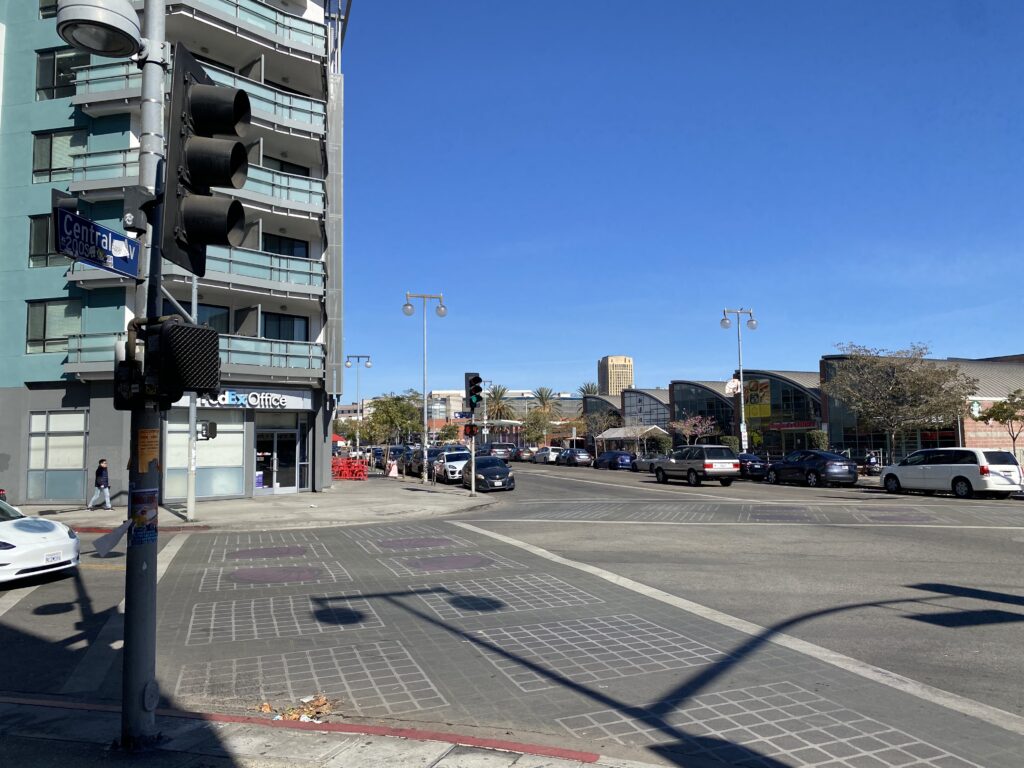
Comparative Negligence in a California Pedestrian Accident
In California, fault is determined by a “comparative negligence” system. Comparative negligence allows an injured party who shares fault for their injuries to receive compensation, a legal action covered by the Comparative Negligence Law, which states:
“Under the pure comparative negligence rule, the state allows the plaintiff to claim damages for the 1% they are not at fault even when they are 99% at fault.”
In most cases, drivers are the at-fault party in pedestrian accidents, however, there can be exceptions. Contrary to popular belief, pedestrians do not always have the right-of-way. For example, let’s use California’s most dangerous intersection according to a study done by the National Highway Traffic Safety Administration, Devonshire St. and Reseda Blvd. in Los Angeles.
Let’s say you’re in a hurry to get something to eat on the other side of the street and you attempt to run across the crosswalk when the crossing light is indicating you not to walk. You’re struck by a vehicle that was also in a hurry and ran a red light. In this case, you can be assigned a percentage of the fault for crossing the street when you were not supposed to.
In this hypothetical scenario, you could be found by a jury to be at 40% fault for your injury. This would leave the driver with 60% of the fault for not being more aware of a person in the street. So, if the final verdict rewards the injured pedestrian with $200,000, they will get $120,000 because their compensation will be reduced by the 40% they were found at fault.
Legal Duty of Pedestrians at a Crosswalk in California
According to California Vehicle Code 21950 (b), pedestrians owe a legal duty to motorists to exercise due care for themselves and other pedestrians around them. CVC 21950 (b) states:
“This section does not relieve a pedestrian from the duty of using due care for his or her safety. No pedestrian may suddenly leave a curb or other place of safety and walk or run into the path of a vehicle that is so close as to constitute an immediate hazard. No pedestrian may unnecessarily stop or delay traffic while in a marked or unmarked crosswalk.”
So, while there are laws to protect pedestrians in crosswalks, pedestrians must exercise caution and avoid stepping out into a crosswalk when it is unsafe. Being aware of traffic also includes traffic control devices. Pedestrians must yield to motorists who have a green light. They must also not step into a crosswalk when the “Don’t Walk” signal is displayed. Not only is it against the law for a pedestrian to cross an intersection with a “Don’t Walk” signal, but this action can also make them liable for any collisions that may occur as a direct result.
Establishing Liability in a Pedestrian Accident
Pedestrian accidents may seem straightforward, but some cases can be deceptively complicated. For instance, if you’re crossing the street while looking down at your phone, or doing something else besides watching the road, you can be found partially liable if you’re struck by a vehicle. Maybe you weren’t looking at your phone, but the driver says you were. What do you do?
For these reasons, it is important to have an experienced Pedestrian Accident Lawyer to help you navigate these legal complexities. In this case, the stronger the evidence, the stronger your claim will be. And a strong claim usually leads to a fair settlement. Strong evidence in a pedestrian accident claim includes:
- The police report, as well as any additional documentation related to the accident
- Photos and videos of the scene. This could include
- Eyewitness statements
- Dash cams
- Traffic cams
- Security cams
- Eyewitness testimony
- A medical report of your injuries from a doctor
- Income statements, which show your lost wages
- Related medical bills
Are Police Officers Allowed to Stop Pedestrians in California?
California Law gives police officers the right to temporarily detain you if they have reasonable suspicion to believe you’ve done something wrong. Reasonable suspicion is based on directly observable evidence that shows you may be involved in misdemeanor or felony criminal activity. Even if the officer does not have an arrest warrant, they can stop based on reasonable suspicion alone.
Even though police officers can stop you, they are NOT allowed to restrain or cuff you. They can, however, block your path and instruct you to remain where you are. They are even allowed to “stop and frisk” you. This type of procedure is known as the “Terry stop,” named for the 1968 Supreme Court case Terry v. Ohio. The Supreme Court ruled that a temporary detention based on reasonable suspicions is constitutional under the Fourth Amendment.
If you are stopped by an officer for reasonable suspicion, it is important to remember the officer must present evidence as to what gave them reasonable suspicion in court.
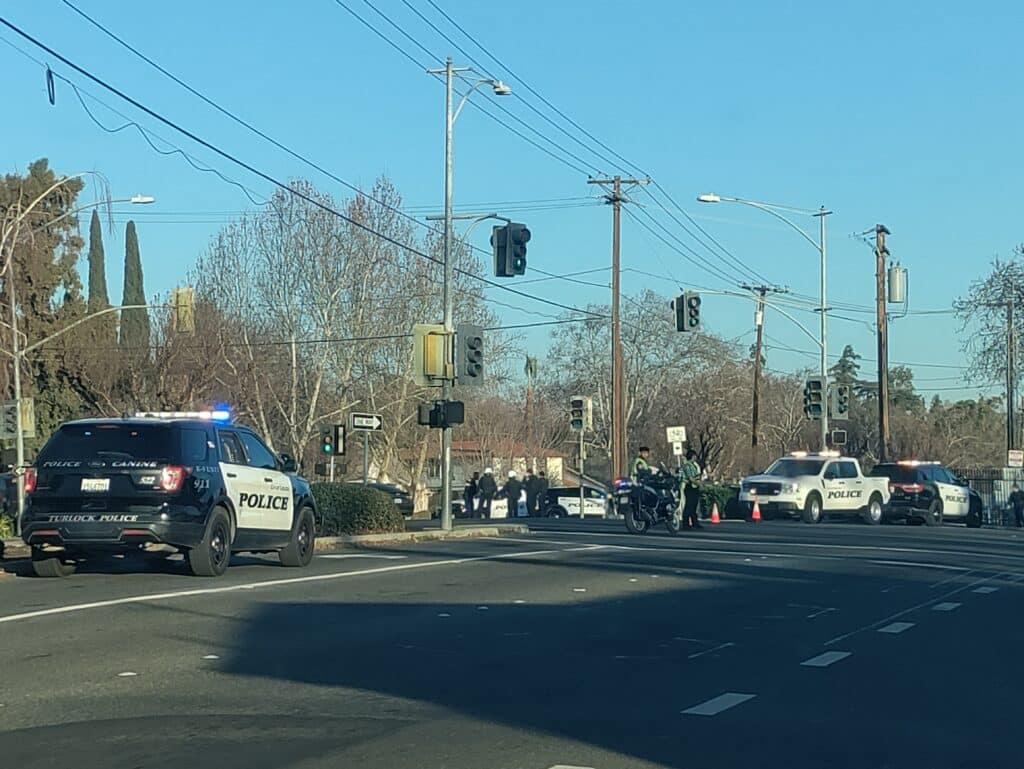
Common Injuries in California Pedestrian Accidents
Unfortunately, pedestrian accidents resulting in serious injury or death on roadways in California are getting worse. There are more people out walking, getting to work, jogging, or shopping along the streets than ever before. In 2018, nearly 1,000 citizens were killed in traffic accidents in California and 14,000 people suffered serious injuries, according to the California Office of Traffic Safety. The serious injuries sustained by pedestrians who do not lose their lives in traffic accidents tend to suffer the following injuries:
- Fractures
- Cuts and contusions
- Organ damage
- Concussions
- Amputations
- Brain injuries
- Spinal cord injuries
What is the Typical Settlement Amount for a Pedestrian Accident Injury in California?
There is no average compensation for pedestrian accident injuries. The result of every personal injury lawsuit varies on a case-to-case basis, so it is difficult to determine the value of every case. However, certain factors can potentially increase your amount of compensation:
- The severity and permanence of your injuries
- The percentage of blame assigned to you in the accident (ranges anywhere from 1% – 99%)
- Your age at the time of the accident
- Your education level and occupation
- Loss of enjoyment you’ve suffered due to injuries or mental trauma sustained from the accident
- Loss of earnings
- Future and present medical treatments
It is proven that payouts for pedestrian accident injury victims tend to be higher for those represented by an experienced Personal Injury Lawyer than those who took legal action without representation.
Average Settlement for Pedestrian Accidents Based on Injury
The severity of your injuries will account for a majority of your overall compensation if you reach a successful settlement. While there are other determining factors, the following personal injury classifications can give you a rough estimate of what your case is worth.
- Minor injuries: Approximately $1,500 – $15,000 – minor injuries are considered sprains, strains, and minor cuts and bruises.
- Moderate injuries: Approximately: $15,000 – $100,000 – moderate injuries are considered fractures, herniated discs, and torn ligaments.
- Severe injuries: Approximately $100,000 – $1,000,000+ – paralysis and death can quickly exceed settlement amounts of around $1,000,000 or more.
Frequently Asked Questions About California Pedestrian Accidents
In California, pedestrians may be partially at fault for their accidents and injuries and still be able to secure financial support for recovery from a driver.
Drivers owe those on foot a special duty of care due to the walker’s defenseless nature when confronting traffic. This higher standard means pedestrians can be at fault for placing themselves in danger, and yet a motorist can still blame bear some liability for not taking all possible action to avoid hitting an unprotected pedestrian.
A pedestrian may jaywalk, crossing the street outside of a crosswalk, but California is a comparative negligence state. That means drivers and pedestrians can share blame in a collision and share in the liability.
A pedestrian can seek to get injury compensation from the driver’s insurance company to help with medical bills and time missed at work. However, any award would be reduced by the percentage of legal fault the pedestrian was assigned in the accident.
2 years.
California maintains a two-year statute of limitations on injury claims. That means you have 24-months to file a claim over pedestrian accidents. If you try to file after the two-years have expired your case will be rejected unless there are extenuating circumstances.
It seems like a long time, but actually, it’s better if you use as little of your allowed time as possible. If you file sooner rather than later, you and your lawyer will have an easier time securing evidence, requesting documents, and keeping track of witnesses and their current addresses.
Most personal injury lawyers work on a contingency basis. This means they don’t get paid unless they win your case.
Once a settlement or judgment over your pedestrian accident is secured on your behalf, attorneys take their share. The amount should be agreed upon when you sign a contingency agreement to allow your lawyer to represent your case. This share is usually around 33% of your award.
Your attorney charges this fee because of the risks they take over the course of your case. They pay all court fees and investigate costs out of their own pockets. They also provide their services and the services of their employees at no charge during that time.
If a case takes months or years to reach a conclusion and isn’t successful, the attorney may have to absorb a substantial loss.
When your injuries go beyond a few scrapes or bruises, a personal injury lawyer is often necessary to make sure you don’t end up paying for your own medical care. You may not realize how quickly your injury expenses escalate. The costs of an emergency room visit and emergency response fees may easily run over a thousand dollars.
When your injury is more serious and requires further doctor visits, physical therapy, and perhaps surgery, the costs can suddenly be more than you could ever cover. You should be able to schedule the best medical care available and not worry over the bill after a driver’s carelessness leaves you injured.
Sadly, an insurance company for that driver may try to dispute facts and delay a settlement to hopefully get you desperate enough to accept a lowball offer. A pedestrian accident attorney can safeguard you from these tactics and make sure you have what you need in recovery.
When you are unfairly blamed for your accident, it’s a good time to call an attorney for a free consultation. If you are struck by a rideshare driver or a professional truck driver you’ll also want to discuss our case with a legal representative. Cases involving large companies can leave you facing off against corporate lawyers trying to shed blame for their employee’s mistakes.
Contact a Pedestrian Accident Lawyer in California
If you or a loved one has been injured in a pedestrian accident in California, the Pedestrian Accident Attorneys at Maison Law are standing by to help you get the compensation you need. We understand the enormous medical costs associated with vehicle accidents and will aggressively pursue a settlement to match the full extent of your damages, even if you were at fault for your injuries. If a settlement cannot be reached, then our firm will represent you in court and advocate on your behalf.
Contact Maison Law today for a free, confidential consultation. Our firm operates on a contingency basis, so you will not have to pay a cent unless we win your case.
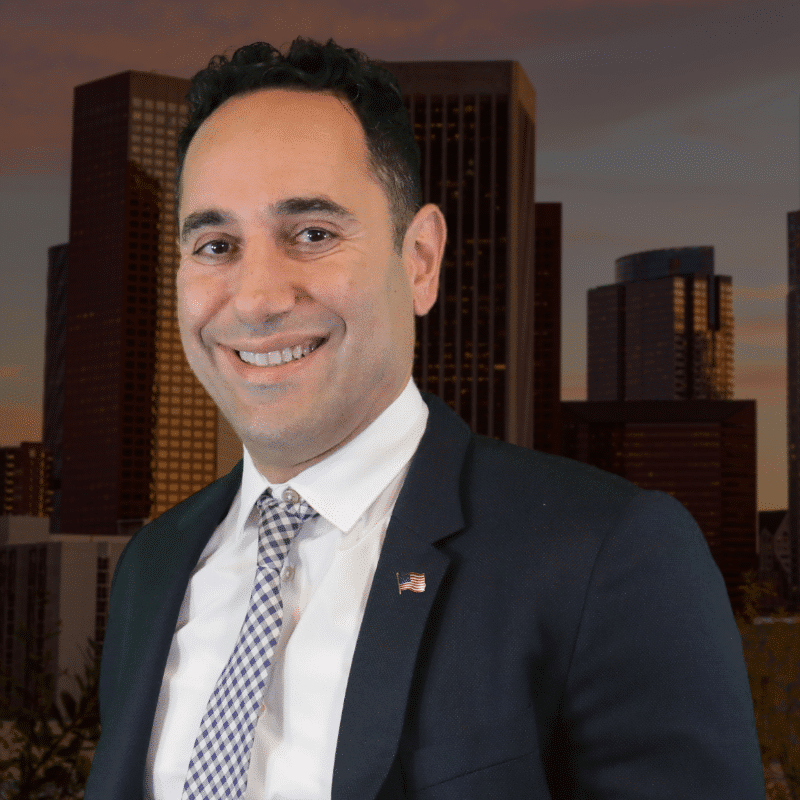
Additional Resources:
- Who Is Responsible For Damages After A Fatal Pedestrian Accident?
- Broken Bones in Pedestrian Accidents
- Who Is at Fault if a Child Runs Into the Road?
- Pedestrian Accidents Involving Children
- California Crossing Guard Law 2815
- Runners Injured in Accidents
- Pedestrian Accidents on Highways
- Accident Reconstructions
- Accidents at Fast Food Restaurants
- California Pedestrian Accident Statistics

